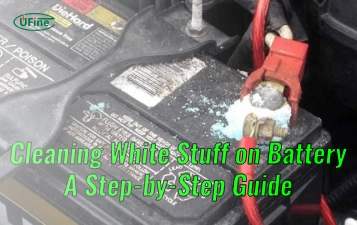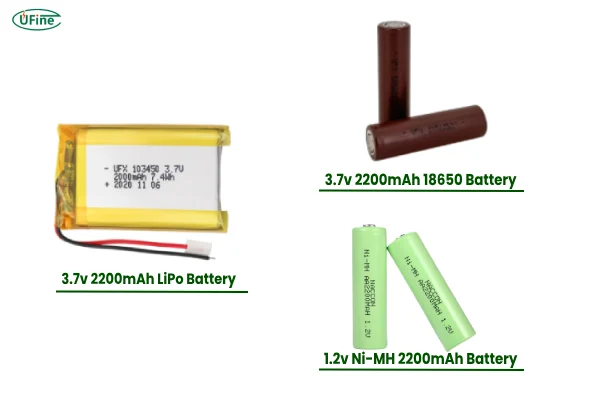Ever wondered why your wireless earbuds last all day, but your smartphone dies by noon? The answer lies in battery capacity—specifically, the 2200 mAh battery powering many of our everyday gadgets.
But how much do you really know about these compact energy sources?
In this in-depth guide, we’ll break down everything—from the chemistry behind 2200 mAh batteries to real-world performance, charging best practices, and proven ways to extend battery life.
By the end, you’ll know:
- Which devices benefit most from a 2200 mAh battery
- How long it lasts under different conditions
- Why charging habits make or break battery lifespan
- Expert tips to keep your battery healthy for years
Let’s dive in!
Part 1. 2200 mAh battery chemistry
Not all batteries are created equal. The chemical composition determines performance, safety, and lifespan.
Lithium-Ion (Li-ion) – The Industry Standard
-
Why it dominates: High energy density, lightweight, and rechargeable.
-
Common uses: Smartphones, tablets, laptops, power banks.
-
Downsides: Degrades faster if frequently fully discharged.
Lithium Polymer (LiPo) – Flexible & Safer
-
Key advantage: No rigid casing, allowing ultra-thin designs (think smartwatches).
-
Safety feature: Less prone to leakage compared to Li-ion.
-
Trade-off: Slightly lower energy density.
Nickel-Metal Hydride (NiMH) – The Older Alternative
-
Still used in: Older electronics, some rechargeable AA/AAA batteries.
-
Problem: “Memory effect” reduces capacity if not fully discharged.
Which one is in your 2200 mAh battery?
Most likely Li-ion or LiPo—these are the go-to choices for modern portable electronics.
Lithium-ion vs. Nickel-metal Hydride vs. Solid-state Battery: Which is Better?
Part 2. Rechargeable and non-rechargeable 2200mAh battery types
Let’s break it down further.
Rechargeable 2200mAh Batteries
- Can be used multiple times
- Common chemistries: Li-ion, LiPo, NiMH, LiFePO4
- Cost-effective (can be reused 300-500+ times)
- Eco-friendly (less waste than disposables)
- Ideal for: Daily-use devices like Bluetooth earbuds, drones, and small power banks.
Non-Rechargeable 2200mAh Batteries
- Single use
- Common chemistries: Alkaline, Lithium Primary (Li-SOCl₂)
- Use cases: Remote controls, emergency lights, certain sensors
- Single-use, found in some medical devices or emergency equipment.
- Rarely in 2200 mAh size—alkaline batteries usually max out at lower capacities.
Bottom line: If your device has a 2200 mAh battery, it’s almost certainly rechargeable.
Part 3. Cycle life of a 3.7V 2200 mAh lithium battery
What Is a “Cycle”?
A full cycle = Using 100% of the battery’s capacity (e.g., 100% → 0% once, or 80% → 30% twice).
How Many Cycles Can You Expect?
-
Standard Li-ion: 300-500 cycles before capacity drops to ~80%.
-
High-quality LiPo: Up to 800 cycles with proper care.
For a 3.7V 2200mAh lithium battery, the average cycle life is:
- 300 to 500 full charge cycles for standard Li-ion
- 500 to 800+ cycles for LiFePO4
- 200 to 300 cycles for older chemistries or poor-quality cells
Over time, even if you charge it properly, the battery’s performance drops. By the 500th cycle, it may only hold around 80% of its original capacity. But with proper care, you can stretch its life further. (More on that below!)
What Kills Battery Life Faster?
- Deep discharges (regularly draining to 0%)
- High temperatures (leaving your phone in a hot car)
- Fast charging all the time (creates excess heat)
Pro Tip: Keep your battery between 20%-80% for maximum longevity.
Part 4. How many hours can a 3.7V 2200mAh lithium battery run?
The running time of a 2200mAh battery depends entirely on what device it’s powering.
Here’s how to calculate it:
Formula:
Battery Life (hours) = Capacity (mAh) ÷ Load Current (mA)
So, if your device draws 220mA, then:
2200 ÷ 220 = 10 hours
But real-world conditions (temperature, efficiency, voltage drops) can affect this. Always consider a margin.
Practical Examples:
| Device | Power Draw (mA) | Estimated Runtime |
|---|---|---|
| Bluetooth Earbuds | 50 mA | 44 hours |
| Smartwatch | 100 mA | 22 hours |
| Smartphone (idle) | 300 mA | 7.3 hours |
| Smartphone (gaming) | 800 mA | 2.75 hours |
A 2200 mAh battery might last all day in a smartwatch but only 2-3 hours in a power-hungry smartphone.
Part 5. What is the charging time of a 3.7V 2200mAh lithium battery?
Charging time depends on the charger output and battery input limit.
Standard Charging (0.5A – 1A)
-
0.5A charger: ~5 hours (slow but safest)
-
1A charger: ~2.5 hours (balanced speed & safety)
Fast Charging (2A+)
-
2A charger: ~1.5 hours (faster but generates heat)
-
Quick Charge 3.0/PD: Even faster, but reduces long-term lifespan.
Basic Formula:
Charging Time = Battery Capacity ÷ Charging Current
So with a 1A charger:
2200mAh ÷ 1000mA = 2.2 hours
With a 0.5A charger, it’s 4.4 hours.
But, to protect the battery and extend its life, most chargers use a constant current / constant voltage (CCCV) charging method, which adds about 10–20% extra time for the final trickle charge phase.
So real-world charging times are:
- 1A charger → 2.5 to 3 hours
- 0.5A charger → 4.5 to 5 hours
Golden Rule: If you’re not in a hurry, slow charging is better for battery health.
Part 6. Fast charging vs slow charging: what’s the impact?
Here’s the truth:
Fast Charging Pros:
- Quicker turnaround time
- Convenient when you’re in a rush
Fast Charging Cons:
- More heat = more wear
- Shortens battery life over time
- Can stress battery chemistry
Slow Charging Pros:
- Less heat
- Gentler on cells
- Prolongs overall lifespan
If you’re not in a rush, slow charging is always better. Many manufacturers recommend charging at 0.5C (half the capacity). For a 2200mAh battery, that’s 1.1A.
Part 7. Is a 2200mAh battery enough for your device?
That depends on your device’s power consumption and how long you need it to run.
Devices Where 2200 mAh Shines
Wireless Earbuds (20+ hours playback)
Fitness Trackers (5-7 days per charge)
Small Power Banks (enough for one full smartphone charge)
Devices That Need More Power
Smartphones (modern flagships need 4000+ mAh)
Tablets (5000+ mAh for decent screen time)
High-Drain Gadgets (drones, handheld gaming devices)
Key Takeaway: A 2200 mAh battery is perfect for low-power wearables but too small for power-hungry devices.
Part 8. How to extend the life of a 2200mAh battery?
Want to get the most out of your battery? Follow these tips:
- Avoid overcharging. Unplug once it hits 100%.
- Don’t drain to 0%. Try to recharge at around 20–30%.
- Avoid extreme heat or cold. Store between 10°C to 25°C (50°F to 77°F).
- Use the correct charger. Don’t over-amp it.
- Store with ~50% charge if unused for weeks.
- Avoid fast charging unless needed. Gentle is better.
- Use a battery management system (BMS) if your application is power-sensitive.
Part 9. FAQs
Can I use a 2200mAh battery in place of a 2000mAh battery?
Yes! As long as the voltage matches, it’ll last a bit longer.
What devices typically use a 2200mAh battery?
Flashlights, RC toys, Bluetooth speakers, wearable tech, handheld fans, etc.
Is 3.7V the same as 4.2V when charging?
Not exactly. 3.7V is the nominal voltage; fully charged it goes up to 4.2V.
Are all 2200mAh batteries the same size?
No. Size depends on cell type (18650, pouch, cylindrical, etc.).
Can I leave a 2200mAh battery charging overnight?
Not recommended. Most modern batteries have protection circuits, but unplugging after full charge is best for longevity.
Related Tags:
More Articles

White Stuff on Battery Terminals: A Step-by-Step Cleaning and Maintenance Guide
White stuff on battery terminals is corrosion. Learn how to clean it safely, prevent damage, and keep your battery running strong with simple steps.
Understanding How Glass Mat Batteries Work: Technology, Benefits, and Limitations
Glass mat batteries power cars, RVs, and solar systems. Learn how they work, their benefits, and what to consider before choosing one.
A Buyer’s Guide for AA Size Lithium Battery
Discover the power of AA size lithium batteries—types, voltage, capacity, and more! Learn how to choose the best one for your needs. Read now!
Li-Ion Battery Prices – Where to Buy Cheap & Safe
Discover li-ion cell prices, key market factors, and how to find affordable custom batteries from top suppliers like Ufine Battery.
Understanding Great Power Battery Technology: The Benefits of Lithium Solutions
Great power batteries deliver high performance for EVs, solar, and more. Learn why lithium is the top choice for power, lifespan, and efficiency.




